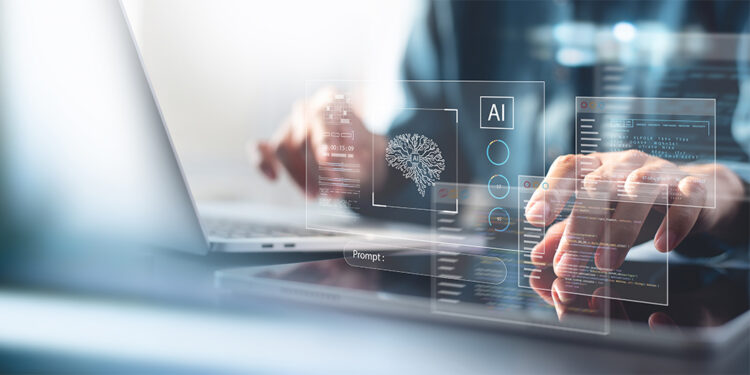Imagine a world where every member and program participant receive personalized guidance tailored to their unique goals and needs — this is the transformative potential of AI at our fingertips.
Artificial intelligence (AI) is not a future idea; it’s already transforming our world. Understanding AI’s basics, its benefits, applications and ethical considerations can help organizations like the YMCA thrive. AI is rapidly reshaping industries like education, healthcare, retail, manufacturing, and social services. Yet, in this sea of change, human development remains centered on spiritual, cognitive and physical well-being.
At the YMCA, we see AI not as a replacement for our work but as an opportunity to enhance and even supercharge our vision. Additionally, it offers efficiency, enhanced service delivery and improved decision-making in a time when many of us are starving for resources and innovation. By integrating AI into our programs and operations, we can create more personalized transformational experiences that empower people to reach their fullest potential.
What Is AI?
AI simulates human intelligence including learning and decision making. It includes key concepts like machine learning (ML), algorithms and automation.
AI and Human Development
Throughout history, breakthroughs have reshaped the human experience and the influenced the process of human development. The printing press democratized knowledge, the internet revolutionized communication and learning, and vaccines drastically improved health outcomes. Similarly, AI is now poised to transform almost every major human ecosystem — education, healthcare, human services, business, transportation and energy.
Despite these exciting innovations, the organizations like the YMCA must remain committed to helping individuals achieve their goals, establish caring and supportive relationships, and find a sense of belonging. Rather than replacing our core human-centered values, AI offers an opportunity to enhance how we serve people. Through more personalized experiences, promoting equity and reaching more people than ever before, we can ensure this technology supports — rather than disrupts — our mission.
However, integration will require adaptive leadership as our tools become more intelligent and engaging. As the Harvard Business Review noted, “Throughout history, technology has been our tools, under our control, behaving in perceptible and rule-based ways. This is changing.” AI is turning our tools into adaptive, learning, and intuitive instruments supporting our work, learning and development.
A Tool for Personalized Growth
This technology has the potential to revolutionize how we tailor programs to meet individual needs. From wellness tracking to youth development programs, AI can offer personalized growth pathways for each participant. The era of “one size fits all” is being replace by customized human development experiences.
For example, imagine a member training for their first marathon. An AI-driven wellness platform can create a personalized training schedule, adjust workouts based on progress and provide nutritional advice tailored to their needs. This level of personalization will keep members engaged and motivated.
In youth programs, tools like adaptive learning platforms can assess a child’s academic performance and tailor lessons to meet their specific needs. For instance, a student struggling with math can receive personalized exercises that focus on their challenges, helping them catch up with their peers.
These personalized interventions empower individuals to take charge of their development, whether they are children growing academically or adults aiming for better health and wellness outcomes.
Examples of AI in Action
Here are some ways AI is already making a difference:
- Fundraising. It can predict donor behavior, optimizing fundraising efforts by identifying the best times to reach out and the most effective messaging.
- Volunteerism. It can match volunteers with suitable roles based on their skills and interests, improving efficiency and satisfaction.
- Donor Management. AI-driven customer relationship management (CRM) systems can personalize donor interactions, enhancing relationships and increasing retention.
- Communication. AI tools can create and schedule communications quickly, ensuring timely and relevant engagement.
- Evaluation. It can analyze program data to identify areas for improvement, helping us refine our services for greater impact.
Promoting Equity
One of the most promising aspects of AI is its ability to expand access to underserved populations. For years, nonprofits like the YMCA have worked tirelessly to bridge the gap in services for marginalized communities. By leveraging this new technology, we can better analyze community needs, expand program access and ensure that services are available to those who need them most.
However, AI is not without its challenges. There are well-documented biases in these systems, often because they are trained on data that reflects societal inequalities. The YMCA is committed to ensuring the AI tools we adopt are designed with equity in mind. We’re collaborating with ethicists to develop training data that reflects our diverse communities, ensuring our AI tools are fair and unbiased. By addressing potential biases early in the design process, we ensure AI enhances our vision of helping individuals feel supported, include and able to thrive, regardless of their background.
Enhancing Relationships and Belonging
At its core, the YMCA’s vision is about helping individuals set and reach goals, establish caring and supportive relationships, and find a sense of belonging. While AI can help streamline operations and personalize services, it cannot — and should not — replace the human connection that’s foundational to our work and necessary for human development.
AI can assist in freeing up staff time by automating routine tasks, allowing them to focus more on building deeper connections with members, staff and volunteers. For example, AI-powered communication platforms can send personalized updates to members, encouraging them to stay active and engaged. These tools can remind members of upcoming events, offer well-being tips or check in on personal goals.
But even with this convenience, nothing can replace a friendly greeting at the front desk or a coach’s words of encouragement during a game. As the Harvard Business Review wisely puts it, “AI won’t replace humans, but humans that don’t use AI will be replaced.”
Seven Actions for AI Integration
To remain aligned with our vision while evolving with new technologies, nonprofit leaders must adopt AI thoughtfully and strategically. Here are seven actions nonprofit leaders can take to integrate AI into their organizations while staying true to their mission:
1. Mind Shift
View it as a valuable team member that can tackle complex tasks and free up human capacity for what matters most — relationships and mission-driven work. It’s more than a smarter search engine.
2. Learn Something Every Week
AI technology is evolving quickly. Regularly updating your understanding will be crucial to staying informed and using tools effectively and responsibly.
3. Use Daily
Incorporate AI into both work and personal routines. For example, using ChatGPT for project planning or automating small task, so you become comfortable and proficient with these tools.
4. Design and Use Custom Solutions
Nonprofits can create tailored solutions specific to their needs, such as enhancing donor engagement, improving service delivery or optimizing operational workflows. Create a GPT on ChatGPT today. If you’re not sure where to start, ask AI to help you.
5. Invest in Integration
Consider hiring part-time or full-time staff dedicated to overseeing integration across the organization, ensuring AI is strategically aligned with your mission and operations.
6. Integrate AI Into the Strategic Plan
Make it a core part of your organization’s future strategy, ensuring it’s thoughtfully applied to enhance efficiency and impact while supporting your overarching goals.
7. Encourage Adoption Among Staff and Partners
Empower and encourage your team to use tools that can improve service delivery, streamline operations, and foster innovation.
Conclusion
As we look toward the future, AI will continue to shape the world around us. Emerging technologies like virtual reality combined with AI could create immersive learning experiences for our youth and adult programs, making education and goal-reaching more engaging and accessible than ever before.
By embracing it responsibly, we’re not just adopting new technology — we’re unlocking and scaling potential, fostering inclusivity and changing lives. Together, we can continue to make meaningful difference in our communities.
This new era will require our voice to ensure the human development process is not lost in the fast-changing AI-infused world. This is our role. By integrating AI, we can lead the way in showing how technology can be harnessed for social good, ensuring while our tools may change, our commitment to people and communities remains steadfast.










